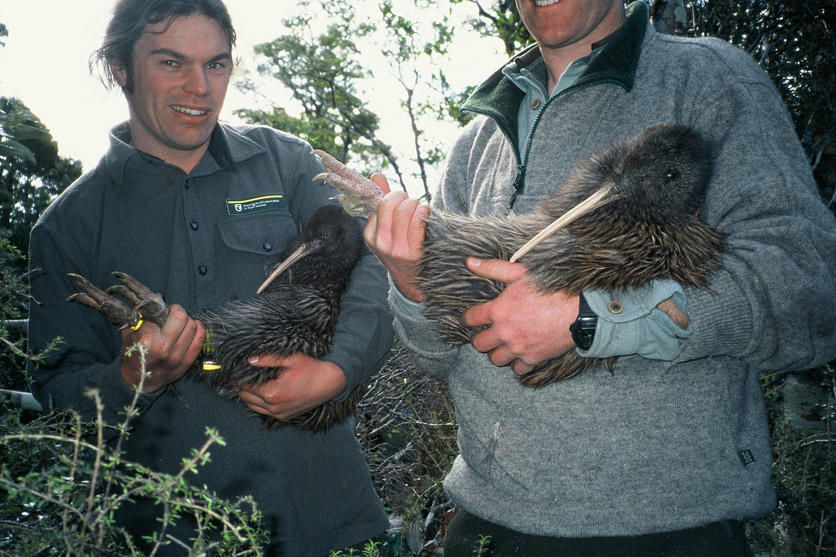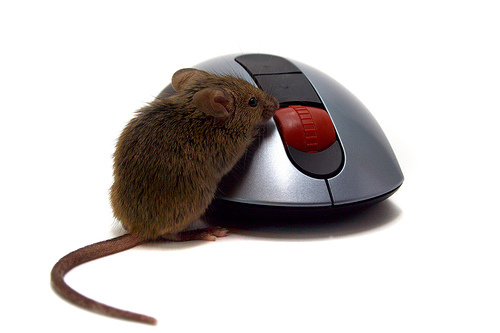Why do scientists go to great lengths to describe and classify species, and why are many of the names so incredibly difficult to say?
We all have names for the plants, animals and fungi around us. We understand what a magpie, a sparrow or a kiwi is. Many of us might be able to tell the difference between a brown kiwi or a little spotted kiwi. The names that we use are often descriptive – brown or black, little or great – and this helps us to describe what we have seen to other people. We are able to tell friends that we have just seen a tūī or a red-billed gull and they will understand.
So why don’t scientists use these names?
Why do they use very long, complicated and often unpronounceable names? The main reason is to avoid confusion. The common name – the one that most of us know, such as brown kiwi – often refers to a number of different species that may all look alike but might live in different areas.
To be a separate species, two animals must not be able to produce a fertile offspring. For example, a horse and a donkey are quite similar and can reproduce, but the offspring (a hinny or a mule) is not fertile (it can’t breed), so we consider horses and donkeys to be separate species.
The same the world over
Scientists name new species using international guidelines such as the ICZN (International Code (IC) of Zoological Nomenclature), ICBN (IC of Botanical Nomenclature), ICNB (IC of Nomenclature of Bacteria) or ICTV (IC of Taxonomy of Viruses).
Each code has its own rules about what needs to be included in the new name and what words can be used. Scientists also have rules about how a name is written. The genus and species are written in italics – this helps the scientists know when the scientific name is being used. For example, the common name octopus is the same as the genus name Octopus. The italics helps us distinguish that we are talking about a particular genus rather than a common description. Also, scientists always put a capital letter for the genus and a small letter for the species – Octopus vulgaris. If the scientist wants to refer to more than one species, they will commonly use the abbreviation ‘spp.’, which refers to all the species within the genus – Octopus spp. If the species is unknown or under review, the convention is to use 'sp' in place of the species name.
Why is the name always in Latin?
Latin is the historical language of scholars and has been in use since Linnaeus first published his book on the systematic naming of plants, and because Latin is not in widespread use anymore, it is not evolving as a language or changing over time.
Modern languages develop new words, and the meaning of existing words changes, which is a problem when precision is needed. When one scientist talks to another about Mus musculus (the common house mouse), there is no confusion with its computer counterpart.
Using Latin also allows scientists around the world to talk with each other. When civilisations evolved, different communities often had different names for the same species or the same names for different species of the florafauna and fungi in their area. Systematic naming ensures that one species has one name, no matter where in the world it can be found.
It’s all relative
The names given to species also provide information about the lineage. It is a bit like a family tree and shows how the organism is related to other species. People in many cultures, including Māori, have a formal introduction that starts with their own name and then lists back through their parents, grandparents, great-grandparents and so on. In the same way, a species name can be traced back through genus, family, order, class, phylum and kingdom (these steps are called divisions).
Nature of science
When scientists develop explanations about the world, they share data, information and explanations about phenomena they are trying to explain. Because scientists are communicating with other scientists, they need a common vocabulary. Scientists working in biosystematics, conservation and biosecurity must know what organisms they are talking about, so they use the same universal classification ideas.
At each step, the organism becomes less related to the other species in that division, so two species in the same genus will be more closely related than two species in the same phylum.
These classifications are continually being evaluated and updated as new information is discovered (for example, developments in DNA technology such as with ferns or geckos), with many well known species being reclassified into a new genus or family to make sure they remain with their closest relatives.
Related content
Find out more about the classification system, Taxonomy – the science of species discovery and the classification of marine organisms. Explore the characteristics of living things using earthworms as an example.
The Connected article Te tapa ingoa explores how early Māori went about naming and grouping the plants and animals they found around them.
The iNaturalist citizen science project is very helpful for species identification.
Activity ideas
- Insect mihi – write a formal introduction for an insect species including its relationship to other animals and the land.
- Make a wanted poster – enhance observation and scientific drawing skills.
- Identifying bugs – with Landcare Research's easy-to-use web pages
- Develop a classification system – use the image cards in this activity to build your own classification system for a number of marine organisms.
- Native plant leaves – DIY classification system – students get a taste of classification without having to work through the complexities of the Linnaean system.Alternatively they could use ferns DIY fern classification.
Useful links
Manaaki Whenua-Landcare Research has a series of short videos narrated in te reo Māori and English. Its scientific name is Prosthemadera novaeseelandiae, but Māori names for tūī vary depending on the time of year, the bird's location and sex.
Classification is not a field that stays still. With technological developments and improvements such as genetic sequencing, new information is becoming available. This means scientists and taxonomists sometimes have to reassess classifications. Learn more in Leon Perrie’s thought-provoking blog Why do scientific names change?.
Species Aotearoa is seeking to boost taxonomy and biosystematics in Aotearoa New Zealand to address the urgent need for fundamental information about our biota.
Find out more about incorporating te reo Māori and understanding the importance of whakapapa in taxonomy:
- This Newsroom article, looks at what is the best way to go about incorporating te reo Māori in taxonomy. For more detailed information see Using te reo Māori and ta re Moriori in taxonomy, New Zealand Journal of Ecology (2019) 43(3): 3388.
- The use of the Māori language in species nomenclature, Journal of Marine and Island Cultures, Vol 2, Issue 2, Dec 2013, Pages 78-84.
- Read this story from Te Ara – the Encyclopedia of New Zealand, The first naturalists: European discovery of plants and animals, it includes how in the Māori world view, all things were linked by genealogies (whakapapa).


